Occupational Environment Monitoring at the Non-Stick Pan Manufacturing Factory
99,000 ₫
Note: The above price is calculated for one sample, and the price may fluctuate depending on the area of the environment to be monitored and market movements. For more accurate pricing support, please refer to the pricing table or contact our consulting staff directly.
Environmental monitoring of a non-stick pan manufacturing factory is a session of collecting, analyzing, and evaluating workplace factors that may be harmful to workers’ health.
Table of Contents
Toggle1. Overview of Non-Stick Pan Manufacturing Factory
a. What is a Non-Stick Pan Manufacturing Factory?
A manufacturing factory of non-stick pans is a facility that carries out the production process of pans equipped with a non-stick coating inside. A non-stick pan is a type of pot or pan coated with a non-stick material such as Teflon or other non-stick coatings, which prevents food from sticking and makes cleaning easier after use.

b. Production stages in a non-stick pan manufacturing factory
In a non-stick pan manufacturing factory, production stages may include:
- Material preparation: The factory prepares materials such as stainless steel, aluminum, or cast iron to form the main components of the pan.
- Material processing: Materials such as steel, aluminum, or cast iron are processed into shapes and sizes suitable for non-stick pans.
- Non-stick coating: The inner surface of the pan is coated with a non-stick material such as Teflon. This coating process typically involves applying the material to the pan surface, then using methods like heat, pressure, or electrostatic spraying to firmly bond the non-stick layer to the pan surface.
- Surface treatment: After coating, the pan may undergo surface treatment to create edges, patterns, or final finishing for the product.
- Quality inspection: Finally, the pan is inspected to ensure that the non-stick coating functions well and has no defects such as peeling or cracking.

c. Machinery used in a non-stick pan manufacturing factory
In a non-stick pan manufacturing factory, various machinery is used to perform production stages. Some common machinery includes:
- Pan cutting machine: Used to cut main material sheets such as stainless steel, aluminum, or cast iron into the desired shape and size for pans.
- Non-stick coating machine: Used to apply non-stick material such as Teflon onto the inner surface of the pan. This coating process often uses technologies such as electrostatic spraying, spray painting, or high temperature to ensure the material firmly adheres to the pan surface.
- Heat press machine: After coating, the pan may be placed in a heat press machine to create a strong bond between the non-stick layer and the pan surface. The heat press provides the necessary pressure and temperature to make the coating adhere tightly to the pan.
- Surface processing machine: Used to process the surface of the pan after coating. Surface processing may include polishing, abrasion, or creating patterns and edges on the pan surface.
- Quality inspection machine: Used to check the quality of the non-stick pan after production. It can test durability, heat resistance, flatness, and non-stick performance of the pan.

d. Occupational diseases that workers in non-stick pan factories may face
Workers in non-stick pan manufacturing factories may be exposed to some occupational diseases related to the work environment and production processes. Some common occupational diseases in this industry include:
- Respiratory diseases: Common in dusty or fume-generating work environments. In non-stick pan factories, working with metals can produce dust and fumes that irritate the respiratory system, causing bronchitis, asthma, pneumonia, and other respiratory issues.
- Skin diseases: Prolonged exposure to materials, chemicals, or irritants during production can cause skin problems such as dermatitis, eczema, allergic reactions, and contact dermatitis.
- Spinal and musculoskeletal issues: Workers often perform physically demanding tasks or maintain awkward postures, which can strain the spine and joints, leading to back pain, arthritis, joint degeneration, and work-related injuries.
- Exposure-related conditions: Workers may come into contact with chemicals, materials, or irritants affecting the skin and eyes, resulting in inflammation, irritation, or burns.
- Hearing problems: If machinery in the factory produces loud noise, workers may develop hearing issues such as hearing loss, tinnitus, or other noise-induced conditions.
To prevent and minimize occupational diseases, personal protective measures such as wearing helmets, masks, chemical-resistant suits, and gloves, as well as following safety regulations and correctly using protective equipment, are essential. Additionally, regular health checks and workplace health protection measures should also be implemented.

e. Popular types of non-stick pans on the market
Some common non-stick pans on the market include:
- Aluminum non-stick pans: Made from aluminum alloy with a non-stick coating. These pans heat quickly, are lightweight, and easy to use.
- Cast iron non-stick pans: Made from galvanized cast iron with a non-stick coating. They have excellent heat conduction and are very durable.
- Stainless steel non-stick pans: Made from stainless steel with a non-stick coating. These pans are corrosion-resistant, rustproof, and easy to clean.
- Titanium non-stick pans: Made from titanium alloy with a non-stick coating. These pans are highly durable, heat-resistant, and relatively lightweight.
- Ceramic-coated non-stick pans: Coated with a layer of ceramic non-stick material. These pans are safe, PFOA- and PTFE-free, and highly heat-resistant.
- Multi-layer non-stick pans: Made from multiple layers of materials such as aluminum, stainless steel, and non-stick coatings. They offer good heat conduction and reliable non-stick performance.
2. Overview of Workplace Environmental Monitoring Services
a. What is workplace environmental monitoring for non-stick pan manufacturing factories?
Workplace environmental monitoring (or measurement of workplace environment) in a non-stick pan manufacturing factory involves collecting, evaluating, and analyzing environmental factors within the factory. The goal is to implement timely measures to minimize environmental impacts on workers’ health and prevent occupational diseases. Environmental monitoring is mandatory for non-stick pan manufacturing factories.
Workplace environmental monitoring is crucial in caring for, protecting, and enhancing workers’ health, as the main resource of a business and the direct source of profit is the workforce. Workers who are regularly exposed to hazardous or harmful factors exceeding permissible standards may experience health issues and develop occupational diseases.
REGISTER WORKPLACE ENVIRONMENTAL MONITORING SERVICE
b. Nam Viet’s Workplace Environmental Monitoring Program
Nam Viet’s workplace environmental monitoring program is developed by monitoring engineers in occupational safety and environmental protection. Aiming to ensure workers’ health and safety, this program uses modern measurement methods to monitor air, water quality, and microclimatic, physical, and dust factors in the workplace. This program is crucial for ensuring a safe working environment and protecting workers’ health.
Additionally, Nam Viet’s monitoring program plays an important role in researching and developing new solutions to improve workplace environmental quality. With the dedication and professionalism of monitoring experts, Nam Viet’s exclusive monitoring program has become a breakthrough in occupational safety and environmental management in Vietnam.

c. Standardization in workplace measurement procedures
Standardization in Nam Viet’s workplace measurement procedures is crucial for ensuring measurement quality. To guarantee accuracy and reliability, the program uses recognized standards and procedures from the Ho Chi Minh City Department of Health. This ensures that collected data are highly reliable for workplace assessments and decisions to improve worker health protection.
These standardized procedures also ensure that measurements are conducted by highly qualified monitoring specialists with years of experience, allowing managers and experts to trust Nam Viet’s results and make precise, valuable decisions for protecting workers and the environment.
By applying standardization in measurement procedures, Nam Viet demonstrates its commitment to ensuring a safe working environment and protecting workers’ health while contributing to the development and improvement of occupational safety and environmental management in Vietnam.
d. Reporting results of workplace monitoring in non-stick pan factories
Workplace monitoring results are prepared according to Form No. 04, Appendix III issued with Decree 44/2016/ND-CP and prepared in two copies: one sent to the contracting workplace and one retained by the monitoring organization.
The retention period of monitoring results is unlimited according to legal regulations.

e. Frequency of workplace environmental monitoring according to the law
According to Clause 2 of Article 18 of Law on Occupational Safety and Health 84/2015/QH13, employers must organize workplace environmental monitoring to assess harmful factors at least once a year.
f. Deadline for submitting workplace monitoring reports according to the law
The report deadline is before December 31 each year. Enterprises operating manufacturing facilities must submit workplace monitoring reports to the Department of Health where the facility has its headquarters and where employees work.
When there are changes in technology, production processes, or facility renovations and upgrades that may introduce new hazards to workers’ health, enterprises must update occupational hygiene records regarding hazardous factors that require workplace environmental monitoring.
g. Penalties for violations of workplace environmental monitoring by employers
According to Article 27 of Decree No. 12/2022/ND-CP dated January 17, 2022, on administrative penalties in labor, social insurance, and Vietnamese workers working abroad under contract:
- Clause 2: Fines of 2,000,000 – 5,000,000 VND for employers who do not publicly disclose monitoring results and hazard assessments to workers immediately after obtaining the results.
- Clause 3: Fines of 20,000,000 – 40,000,000 VND for employers who fail to conduct workplace monitoring to control health hazards as required by law.
- Clause 4: Fines of 40,000,000 – 60,000,000 VND for employers who collude with monitoring organizations to commit fraud in workplace environmental monitoring activities, but not reaching criminal liability.
3. Harmful environmental factors for workers in non-stick pan manufacturing factories
During work in non-stick pan manufacturing factories, workers may be exposed to the following harmful environmental factors:
- Smoke and fumes from the production process: The manufacturing process of non-stick pans can generate smoke and fumes from non-stick materials, coatings, and other chemical compounds. Exposure to these smoke and fumes may negatively affect the respiratory system, causing irritation, mucous membrane inflammation, and other health issues.
- Dust and fine particles: Processes such as machining, grinding, cutting, and coating non-stick pans can produce dust and fine particles. Exposure to dust and fine particles may cause respiratory and skin irritation, infections, allergies, and other health problems.
- Noise: Machinery and equipment in non-stick pan factories can generate high noise levels. Continuous and loud noise can cause stress, fatigue, and long-term hearing damage.
- Chemicals: The production of non-stick pans may involve chemicals such as solvents, metal compounds, coatings, and cleaning agents. Exposure to these chemicals can cause skin irritation, respiratory issues, and other health problems.
- Temperature and pressure: Non-stick pan production may involve high temperatures and pressures. Workers may need to work in hot environments, under high pressure, or with sudden temperature changes, causing stress and fatigue.
REGISTER FOR OCCUPATIONAL ENVIRONMENTAL MONITORING SERVICE
4. Measures to improve the working environment in non-stick pan manufacturing factories
To improve the working environment in non-stick pan factories and protect workers’ health, the following measures can be applied:
- Ensure proper ventilation and exhaust systems: Maintain effective ventilation and exhaust fans to remove smoke, fumes, and dust during production. This helps reduce exposure to harmful substances and improves air quality in the factory.
- Provide personal protective equipment (PPE): Supply workers with proper PPE, including masks, gloves, safety glasses, protective clothing, and helmets, to protect against smoke, dust, fumes, and other hazards.
- Training and guidance: Train workers on correct PPE usage, safety measures, and work procedures. Ensure that employees understand and comply with occupational safety regulations.
- Noise control: Apply technical measures to reduce factory noise, such as soundproofing materials, noise dampers, or adhering to production noise limit regulations.
- Chemical management: Ensure safe use of chemicals in the production of non-stick pans. Instruct workers on proper handling, storage, and transportation of chemicals safely.
- Temperature and pressure control: Maintain stable and safe cooling, air conditioning, and other temperature and pressure control systems.
- Regular inspection and maintenance: Periodically inspect and maintain equipment and machinery to ensure effective and safe operation. This helps reduce the risk of incidents and protects workers’ health.
- Periodically conduct occupational environmental monitoring in factories, collect and analyze harmful factors affecting workers, and adjust conditions to reduce hazards and prevent occupational diseases.
5. Benefits of periodic monitoring in non-stick pan manufacturing factories
An Toan Nam Viet provides businesses with excellent benefits when using occupational environmental monitoring services according to Decree 44/2016/ND – CP on managing and controlling harmful factors in the working environment affecting employees.
- Businesses can proactively control harmful factors in workshops or factories.
- Receive recommendations on measures to minimize harmful factors and improve workplace quality.
- Indirectly protect human resources, a key factor in business development.
- Reduce the impact of occupational diseases on workers’ health, minimizing future treatment costs.
- Improved worker health leads to better product quality and stable production output.
- Ensure compliance with occupational safety laws, avoiding legal risks.
- Enhance credibility and professionalism in all aspects, elevating the company’s brand.
Nam Viet’s environmental monitoring service is a solution to minimize the impact of occupational diseases, contributing to a clean and high-quality working environment.

6. National occupational environmental monitoring center
Occupational Environmental Monitoring Center of Nam Viet is a professional unit monitoring and measuring the quality of working environments across all provinces and cities in Vietnam. With a team of experienced monitoring specialists, the center uses modern equipment to ensure accuracy and reliability.
In addition to monitoring services, the center assists customers in planning, handling, and tracking occupational environmental issues. With the motto “customer-centered,” the center prioritizes customer satisfaction, meets all customer needs, and is committed to providing the best solutions for businesses.
REGISTER FOR OCCUPATIONAL ENVIRONMENTAL MONITORING SERVICE
With investments in technology, equipment, and human resources, Nam Viet’s monitoring center has become a reputable unit in occupational environmental monitoring in Ho Chi Minh City with the following objectives:
- We always value brand reputation and service quality.
- We provide customers with the best and most suitable solutions possible.
- With a team of experienced Masters and Engineers, we aim to protect the environment and benefit businesses.
- Working with Nam Viet Environmental Monitoring team, companies receive professional service from experts and the best cost advantages.
The occupational environmental monitoring process at Nam Viet includes the following basic steps:
- Before conducting monitoring, our company ensures all equipment is calibrated according to legal regulations.
- Strictly implement occupational environmental monitoring procedures as committed to the Department of Health.
- Accurately report monitoring results to employers.
- If monitoring results indicate unsafe conditions, Nam Viet provides remedial solutions, and the employer implements the following:
- Apply measures to improve working conditions, minimizing harmful factors and preventing occupational diseases.
- Organize health checks to detect occupational and work-related diseases for employees in unsafe environments.
- Provide material compensation for employees according to labor laws.

7. Occupational environmental monitoring service quotation
To help businesses conduct occupational environmental monitoring professionally and effectively, Nam Viet provides customers with a high-quality and reasonably priced service quotation for occupational environmental monitoring.
- Our quotation provides detailed information on the costs of monitoring services, including transportation, measurement, analysis, and reporting. Customers can fully rely on the accuracy and reliability of the reports we provide.
- We commit to offering the most competitive and reasonable prices on the market and are always ready to promptly answer all questions regarding monitoring services professionally.
- With Nam Viet’s quotation, customers can easily choose service packages that suit their needs. We are committed to delivering the highest satisfaction with professional service quality.
No comments yet

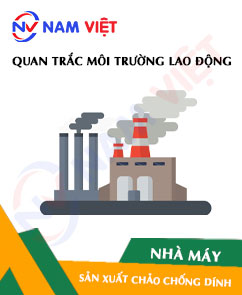
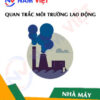
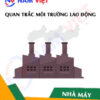
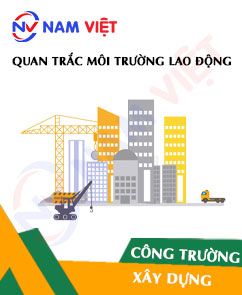





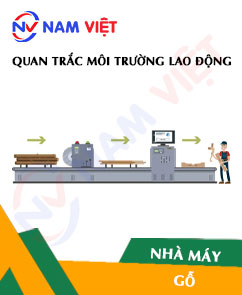
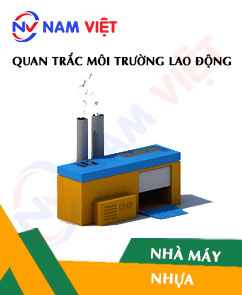
Review Occupational Environment Monitoring at the Non-Stick Pan Manufacturing Factory
There are no reviews yet.